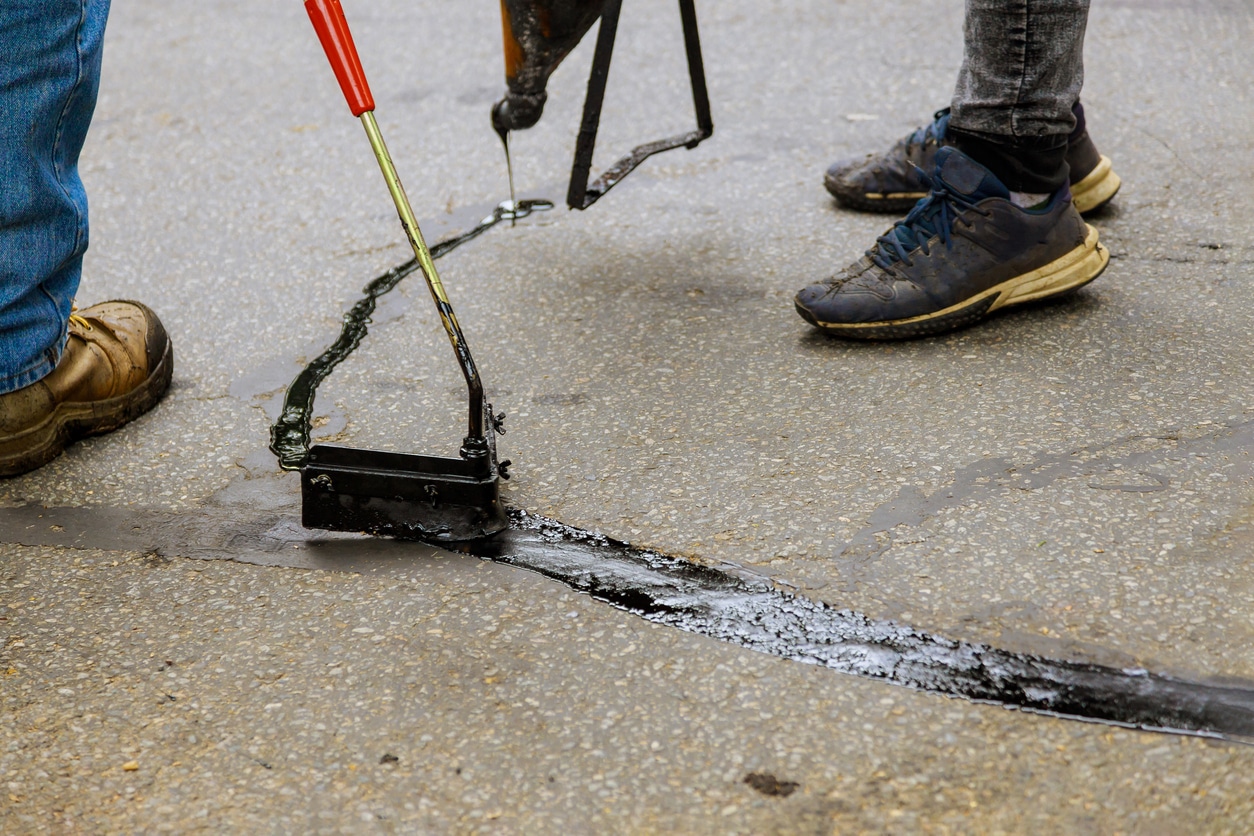Warm Mix Asphalt: A Lasting Remedy for Pavement
Hot Mix Asphalt (HMA) has actually arised as a leading sustainable choice for sidewalk services, supplying a myriad of ingenious modern technologies and ecological benefits. As the demand for eco-friendly building techniques expands, exploring the nuances of HMA's sustainability can supply beneficial insights into the future of pavement solutions.
Ecological Benefits of Warm Mix Asphalt

Furthermore, Warm Mix Asphalt aids to minimize metropolitan warm island results. Its dark color takes in sunshine, decreasing the amount of warmth showed back right into the environment contrasted to lighter-colored pavements. This can reduce ambient temperature levels in urban locations, lowering the demand for air conditioning and eventually lowering power consumption.
Furthermore, Hot Mix Asphalt adds to boosted stormwater management. Its porous nature enables water to recharge and infiltrate the pavement groundwater supplies, minimizing runoff and the danger of flooding. These environmental benefits make Hot Mix Asphalt a sustainable option for paving roads and highways.
Energy Efficiency in HMA Production
Is energy efficiency an important consider the manufacturing of Warm Mix Asphalt (HMA)? Definitely. Power plays a substantial duty in the manufacturing of HMA, influencing both cost and environmental sustainability. One essential aspect of energy performance in HMA production is the use of warm mix asphalt (WMA) technologies (angled parking). WMA enables the mixing and placement of asphalt at lower temperature levels contrasted to typical warm mix asphalt, resulting in reduced power usage during production. This procedure not just decreases fuel use however also decreases greenhouse gas discharges, making it a more eco-friendly choice.
Moreover, advancements in plant modern technologies have actually caused even more energy-efficient HMA manufacturing processes. Modern plants are created with functions like recycled asphalt sidewalk (RAP) processing capacities, effective heater systems, and enhanced insulation, all adding to power cost savings. By optimizing energy usage in HMA manufacturing, the sector can decrease its carbon footprint while preserving top quality sidewalk products. Energy effectiveness is, therefore, an important consideration in guaranteeing the sustainability of Warm Mix Asphalt manufacturing.
Recyclability of Hot Mix Asphalt
The recyclability of Warm Mix Asphalt (HMA) is a critical facet of its sustainability and long-lasting ecological influence. HMA is one of the most recycled materials in the USA, with over 100 million loads of redeemed asphalt sidewalk (RAP) being recycled each year in brand-new pavement building. Reusing HMA supplies several ecological benefits, such as minimizing the demand for virgin products, decreasing power consumption during production, and reducing the quantity of waste sent to garbage dumps.
The procedure of recycling HMA involves milling the existing pavement, crushing it into smaller pieces, and mixing it with new aggregate and asphalt binder to create a recycled mix. This recycled mix can typically do along with and even far better than commercial parking lot paving standard HMA, while calling for less basic materials and generating reduced greenhouse gas exhausts. By including RAP right into new sidewalk tasks, road firms can save natural deposits, lower prices, and lessen the ecological footprint of roadway construction and maintenance tasks. On the whole, the recyclability of HMA plays a substantial duty in promoting sustainable techniques within the sidewalk industry.

Long-Term Efficiency of HMA
Asphalt sidewalks show sturdiness and durability over a prolonged period, showing the long-lasting performance of Hot Mix Asphalt (HMA) The durability of HMA can be associated to its capability to endure heavy web traffic loads, severe weather condition conditions, and the effects of aging. Studies have revealed that properly designed and appropriately built HMA pavements can last for 20 years or more with normal maintenance. The secret to optimizing the long-lasting performance of HMA lies in making use of top notch products, complying with best practices in building and construction, and applying reliable maintenance strategies. Correct drain, routine inspections, and prompt repair work are important for preserving the architectural stability of HMA pavements with time. In addition, developments in HMA technology, such as the usage of polymer-modified binders and cozy mix asphalt, have actually even more improved the longevity and durability of HMA sidewalks. By focusing on top quality building and construction and upkeep methods, HMA remains to verify itself as a cost-effective and lasting solution for long-lasting pavement facilities.

HMA: Longevity and Sustainability
Demonstrating both toughness and sustainability, Hot Mix Asphalt (HMA) has become a keystone in the building and construction of resilient pavement infrastructures - angled parking. HMA's durability comes from its capacity to endure heavy loads, harsh weather, and high web traffic quantities, making it a trustworthy option for roadways, freeways, and flight terminal paths. The structure of HMA, which generally includes aggregates, binder, and filler, plays a critical duty in enhancing its durability and resistance to deterioration
In addition, HMA's sustainability lies in its recyclability and energy-efficient production process. The capability to recycle reclaimed asphalt pavement (RAP) in new HMA combinations decreases the need for virgin materials and minimizes the ecological effect of sidewalk building his explanation and construction and upkeep. In addition, the power efficiency of creating HMA lies in its reduced blending temperatures compared to other sidewalk materials, resulting in minimized energy consumption and greenhouse gas emissions.
Verdict
In verdict, warm mix asphalt (HMA) supplies a sustainable service for pavement with its environmentally friendly characteristics. HMA's recyclability, energy performance in production, and long-lasting longevity make it an environmentally friendly choice for roadway construction.
HMA is one of the most recycled materials in the United States, with over 100 million bunches of reclaimed asphalt pavement (RAP) being recycled every year in brand-new pavement building and construction.The procedure of recycling HMA involves milling the existing sidewalk, squashing it right into smaller items, and blending it with new aggregate and asphalt binder to create a recycled mix.Asphalt sidewalks demonstrate durability and strength over a prolonged duration, mirroring the lasting performance of Hot Mix Asphalt (HMA) In addition, developments in HMA modern technology, my response such as the use of polymer-modified binders and warm mix asphalt, have actually further improved the resilience and long life of HMA sidewalks. The ability to recycle reclaimed asphalt sidewalk (RAP) in brand-new HMA mixes lowers the demand for virgin materials and reduces the environmental influence of pavement building and construction and upkeep.
Comments on “Optimize Financial Investment Returns: Angled Parking Area Excellence with Asphalt Sealing”